Agnes |
||||||||||||||||||||||||||||
 |
 |
|||||||||||||||||||||||||||
Knitted jacket with round yoke in DROPS Sky. Piece is knitted top down with lace pattern. Size: S - XXXL Knitted hat in DROPS Sky with rolling edge.
DROPS 197-15 |
||||||||||||||||||||||||||||
|
EXPLANATION FOR PATTERN: ---------------------------------------------------------- GARTER STITCH (back and forth): 1 ridge = knit 2 rows. GARTER STITCH (worked in the round): 1 ridge = 2 rounds. Knit 1 round and purl 1 round. PATTERN: See diagrams A.1 to A.5. Choose diagram for your size. Diagrams show all rows in pattern seen from the right side. ELEVATION (applies to back of neck): Work the elevation in garter stitch. Insert 1 marker thread after 63-66-69-72-75-78 stitches (= approx. mid back). Begin from right side and knit 7-8-8-9-9-10 stitches past marker thread, turn, tighten yarn and knit 14-16-16-18-18-20 stitches. Turn, tighten yarn and knit 21-24-24-27-27-30 stitches, turn, tighten yarn and knit 28-32-32-36-36-40 stitches. Turn, tighten yarn and knit 35-40-40-45-45-50 stitches, turn, tighten yarn and knit 42-48-48-54-54-60 stitches. Turn, tighten yarn and knit 49-56-56-63-63-70 stitches, turn, tighten yarn and knit the rest of row. INCREASE TIP-1 (evenly): To calculate how to increase evenly, use the total number of stitches on row (e.g. 102 stitches), minus band (= 10 stitches in total = 92 stitches) and divide stitches by number of increases to be done (e.g. 25) = 3.68. In this example increase by making 1 yarn over after approx. every 4th stitch. On next row work yarn overs twisted to avoid holes. INCREASE TIP-2 (applies to sides of body): All increases are done from the right side. Work until 2 stitches remain before marker thread, 1 yarn over, knit 4 (marker thread is in the middle of these stitches), 1 yarn over. On next row work yarn over twisted to avoid holes Then work the new stitches in stocking stitch. DECREASE TIP-1 (applies to sleeves): Decrease 1 stitch on each side of marker thread as follows: Work until 3 stitches remain before marker thread and knit 2 together, knit 2 (marker thread is between these stitches), slip 1 stitch knitwise, knit 1, pass slipped stitch over stitch worked. BUTTONHOLES: Decrease for buttonholes on right band (when garment is worn). Decrease from right side when 3 stitches remain on row as follows: Make 1 yarn over, knit the next 2 stitches together, knit last stitch. On next row knit yarn over to make holes. Decrease first buttonhole when piece measures approx. 1½-2 cm. Decrease for second buttonhole when piece measures 7 cm. Then decrease the next 4-4-5-5-6-6 approx. 8½-8½-7½-7½-7-7 cm apart. DECREASE TIP-2 (applies to hat): Decrease 1 stitch after every marker thread as follows: Slip 1 stitch knitwise, knit 1, pass slipped stitch over stitch worked (= 1 stitch decreased = 6 stitches decreased in total). ---------------------------------------------------------- BEGIN PIECE HERE: ---------------------------------------------------------- JACKET - SHORT SUMMARY OF GARMENT: Worked back and forth, top down on circular needle to armhole, then finish body and sleeves separately. Continue body back and forth. Sleeves are worked in the round on double pointed needles. YOKE: Cast on 102-106-110-118-122-128 stitches (including 5 band stitches in each side of piece) on circular needle size 3.5 mm with Sky. Work 2 ridges in GARTER STITCH - read explanation above. Knit 1 row from right side and increase 25-27-29-27-29-29 stitches evenly - read INCREASE TIP-1 = 127-133-139-145-151-157 stitches. Knit 1 row from wrong side. Switch to circular needle size 4 mm. For better fit work an elevation at the back of neck so that yoke is somewhat higher on back piece. This elevation can be skipped, to make the neck the same at the front and back - read ELEVATION. Decrease for BUTTONHOLES on right band - read explanation above. Then work pattern as follows from right side: Work 5 band stitches in garter stitch, A.1 (= 8 stitches), A.2 (= 6 stitches) over the next 102-108-114-120-126-132 stitches (= 17-18-19-20-21-22 times in width), A.3 (= 7 stitches) and finish with 5 band stitches in garter stitch. On every row with star (= increase row) increase as follows: REMEMBER THE KNITTING TENSION! 1ST INCREASE: Increase 24-24-24-24-30-30 stitches evenly = 151-157-163-169-181-187 stitches. Then repeat A.2 21-22-23-24-26-27 times in width. 2ND INCREASE: Increase 18-18-24-24-24-30 stitches evenly = 169-175-187-193-205-217 stitches. Then repeat A.2 24-25-27-28-30-32 times in width. 3RD INCREASE: Increase 12-18-18-24-24-24 stitches evenly = 181-193-205-217-229-241 stitches. Then repeat A.2 26-28-30-32-34-36 times in width. When A.1 to A.3 have been worked 1 time vertically, piece measures approx. 8 cm from cast-on edge. Then work as follows from right side: Work 5 band stitches in garter stitch, 1 stitch in stocking stitch, A.4 (= 13 stitches), work A.5 (= 12 stitches) over the next 156-168-180-192-204-216 stitches (= 13-14-15-16-17-18 times in width), 1 stitch in stocking stitch and finish with 5 band stitches in garter stitch. When A.4 and A.5 have been worked 1 time vertically, there are 307-343-365-404-427-450 stitches on needle. Piece measures approx. 21-22-22-24-24-24 cm. Continue back and forth in stocking stitch until piece measures 21-23-24-26-28-29 cm. Now divide the piece for sleeves and body as follows: Work 5 band stitches in garter stitch, stocking stitch over the next 42-47-50-57-62-66 stitches, slip the next 64-72-78-82-84-88 stitches on a stitch holder for sleeve and cast on 8-8-10-10-12-12 stitches under sleeve, work stocking stitch over the next 85-95-99-116-125-132 stitches, slip the next 64-72-78-82-84-88 stitches on a stitch holder for sleeve and cast on 8-8-10-10-12-12 stitches under sleeve, work 42-47-50-57-62-66 stitches in stocking stitch and finish with 5 band stitches in garter stitch = 195-215-229-260-283-298 stitches. BODY: Insert 1 marker thread in the middle of the 8-8-10-10-12-12 stitches under each sleeve. Work in stocking stitch with 5 band stitches in garter stitch in each side. When piece measures 2 cm from where body was divided for sleeves, increase 1 stitch on each side of every marker thread - read INCREASE TIP-2! Increase like this every 3½-4½-4-6-5-3½ cm 6-5-6-4-5-7 times in total = 219-235-253-276-303-326 stitches. Continue in stocking stitch until piece measures 30-30-31-31-31-32 cm from where body was divided from sleeves. Switch to circular needle size 3.5 mm and work in garter stitch until piece measures 32-32-33-33-33-34 cm from where body was divided from sleeves. Cast off by knitting. Piece measures 56-58-60-62-64-66 cm from shoulder. SLEEVE: Slip the 64-72-78-82-84-88 stitches from stitch holder in one side of piece on double pointed needles size 4 mm and pick up 1 stitch in each of the 8-8-10-10-12-12 stitches under sleeve = 72-80-88-92-96-100 stitches. Insert 1 marker thread in the middle of the 8-8-10-10-12-12 stitches under sleeve. Work in stocking stitch in the round. When piece measures 3 cm, decrease 1 stitch on each side of marker thread - read DECREASE TIP-1. Decrease like this every 2½-2-1½-1½-1½-1½ cm 13-16-19-19-20-21 times in total = 46-48-50-54-56-58 stitches. When sleeve measures 42-41-40-39-37-36 cm from where sleeve was divide from body, switch to double pointed needles size 3.5 mm and work 3 ridges in GARTER STITCH in the round - read explanation above. Then loosely cast off by knitting. Sleeve measures approx. 65-66-66-67-67-67 cm in total from cast-on edge. Work the other sleeve the same way. ASSEMBLY: Sew on buttons on left band. ---------------------------------------------------------- HAT - SHORT SUMMARY OF PIECE: Worked in the round on circular needle, switch to double pointed needles when decreasing. HAT: Cast on 108-112 stitches with Sky on circular needle size 3.5 mm. Work 4 rounds in stocking stitch. Work next round as follows: * Knit 1, purl 1 *, repeat from *-* the entire round. Now work in stocking stitch over all stitches until finished measurements. REMEMBER THE KNITTING TENSION! When piece measures 20-22 cm, decrease 0-4 stitches evenly (i.e. knit every 27th and 28th stitch in size M/L together) = 108 stitches. Insert 6 markers in the piece, 18 stitches apart. On next round, decrease 1 stitch at every marker thread – read DECREASE TIP-2. Decrease like this on every other round 8 times in total and then on every round 6 times in total = 24 stitches. On next round knit all stitches twisted together 2 by 2 = 12 stitches. Cut the yarn and pull it through the remaining stitches, tighten together and fasten. Piece measures approx. 27-29 cm from top and down. |
||||||||||||||||||||||||||||
Diagram explanations |
||||||||||||||||||||||||||||
|
||||||||||||||||||||||||||||

|
||||||||||||||||||||||||||||

|
||||||||||||||||||||||||||||
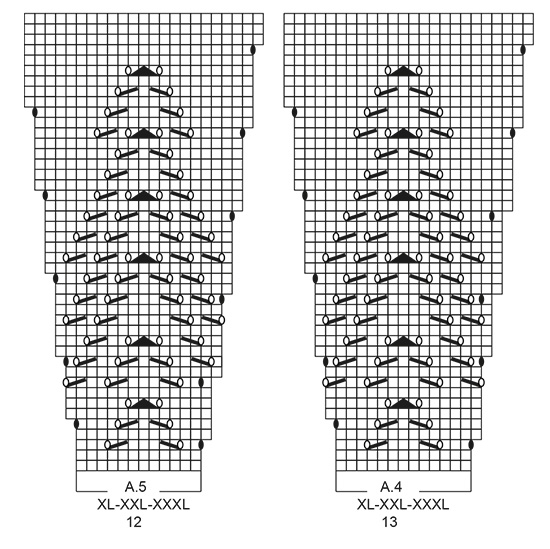
|
||||||||||||||||||||||||||||
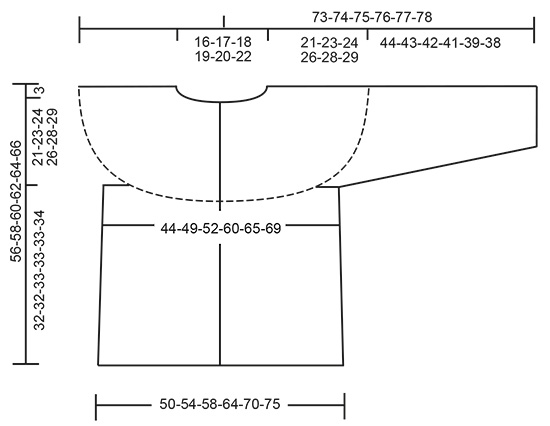
|
||||||||||||||||||||||||||||
|
Have you made this or any other of our designs? Tag your pictures in social media with #dropsdesign so we can see them! Do you need help with this pattern?You'll find tutorial videos, a Comments/Questions area and more by visiting the pattern on garnstudio.com. © 1982-2024 DROPS Design A/S. We reserve all rights. This document, including all its sub-sections, has copyrights. Read more about what you can do with our patterns at the bottom of each pattern on our site. |
||||||||||||||||||||||||||||









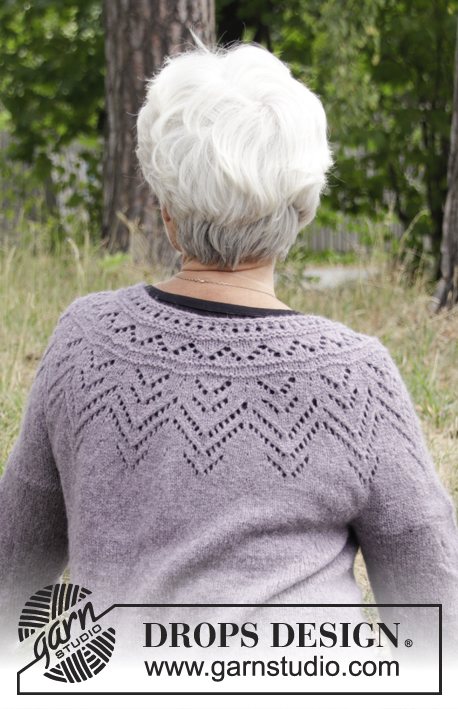




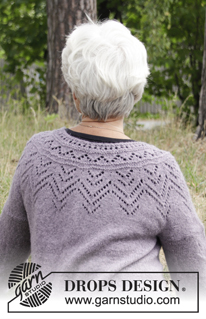





























































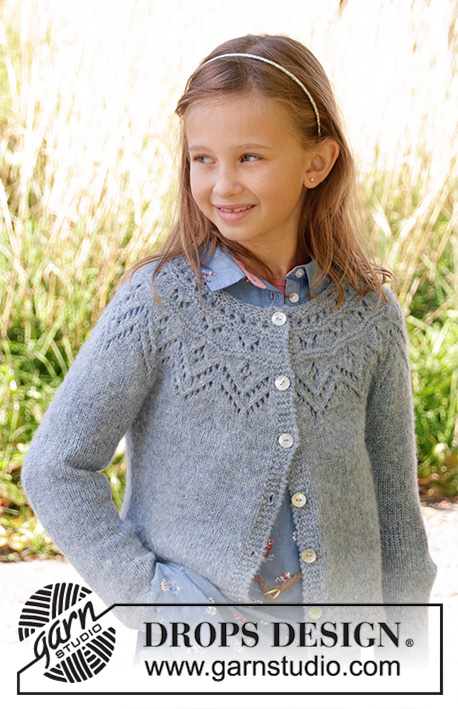








Comments / Questions (30)
Wenn A 1 bis A3 einmal gestrickt ist, soll man wie folgt stricken. 5 Maschen glatt rechts, 1Masche glatt rechts ,A4 13, Maschen usw. Meine Frage ist, muss ich diese eine rechte Masche immer wieder stricken?
28.01.2021 - 11:54DROPS Design answered:
Liebe Gisa, nach A.1-A.3 stricken Sie A.5 und A.5 mit 5 Blendemaschen kraus rechts (= wie zuvor) und 1 Masche glatt rechts beidseitig damit das Muster symetrisch wird. Viel Spaß beim stricken!
28.01.2021 - 13:50Your answer makes perfect sense. Thanks so much for the quick reply!
13.11.2020 - 14:52I made the Agnes Drops Children 34-9 for my granddaughter. It turned out beautifully. This is my first DROPS pattern, and I found it easy to understand and enjoyed making it very much.
13.11.2020 - 02:58Hello! In the 1st increase row, are the increases completed while also working chart A.2 in the same row? How is this accomplished? Thanks in advance for your help.
13.11.2020 - 02:55DROPS Design answered:
Dear Susan, on 7th row in A.2 you will increase 24 or 30 (see size) sts evenly (read more here) then on next row you will have enough stitches to repeat A.2 4 or 5 more times. On 2nd increase row, you will increarse 18, 24 or 30 sts = 3, 4 or 5 more repeats of A.2 in width after this row and on 3rd increase row, you will increase 12, 18 or 24 sts = 2, 3 or 4 more repeats of A.2 in width after this row. Happy knitting!
13.11.2020 - 08:28Vielen Dank für die rasche Hilfe. Jetzt habe ich meinen Fehler erkannt ;-) Und es kann weitergehen mit der wunderschönen Jacke .
06.07.2020 - 09:32Ich habe ein Problem bei dem Musterübergang von A4 auf A5. Das Muster rutscht mir dort komplett weg ab Reihe 11. In Reihe 11 sollen (Größe M) 3 Maschen per Umschlag zugenommen werden: Am Anfang von Rapport A4 am Ende von Rapport A4 und am Ende von Rapport A5. Wie kann ich denn am Ende von A5 und am Anfang von A4 per Umschlag eine Masche zunehmen. Das wäre dann ja ein Doppelumschlag, der ein großes Loch hinterlässt. Was verstehe ich hier an dieser Stelle falsch? Danke für eure Hilfe.
05.07.2020 - 17:07DROPS Design answered:
Liebe Gabi, A.4 wird nur einmal in der Breite gestrickt (= dann nehmen Sie bei der 11. Reihe 1 M am Anfang + 1 Masche am Ende vom Rapport) dann wierdeholen Sie A.5 (14 Mal in der Breite in M) = 1 Umschlag am Ende vom jeden A.5. Viel Spaß beim stricken!
06.07.2020 - 09:06Den første pind efter opslagning er det ret eller vrangside? Jeg har taget den som værende retside, men så syntes jeg ydermere det er svært at aflure om der skal være en pind retstrik efter første knaphul eller om mønsteret starter på vrangsiden? Håber mine spørgsmål er til at forstå.
20.06.2020 - 17:14DROPS Design answered:
Hei Kristina. Første rad i alle diagrammene strikkes fra retten, så både kast/omslag og de ulike ikonene i diagrammene gjøres fra retten. God Fornøyelse!
22.06.2020 - 13:22Pourquoi a la 2e augmentation jai trop de mailles
26.03.2020 - 01:16DROPS Design answered:
Bonjour Mme Ratthe, pouvez-vous nous indiquer quelle taille vous tricotez et où vous en êtes exactement? Merci!
26.03.2020 - 10:34Mijn vraag gaat over het breien van patroon A4 en A5., Aan het begin A4 en A5 van de derde toer komt een omslag, in de volgende toer wordt deze gedraaid gebreid "zodat er een gaatje ontstaat". Moet dat niet zijn zodat er geen gaatje ontstaat??
31.10.2019 - 17:19DROPS Design answered:
Dag Lea,
Je hebt gelijk, er moet inderdaad staan dat er geen gaatje ontstaat. Het is nu aangepast. Dankjewel!
05.11.2019 - 13:22Hallo, recht herzlichen Dank. Jetzt hab ich meinen Fehler erkannt :-)
08.07.2019 - 18:38